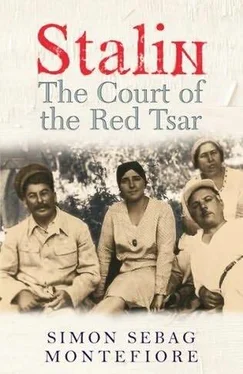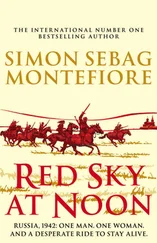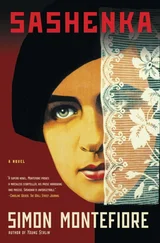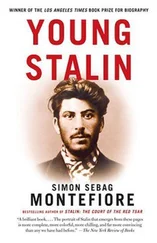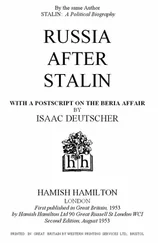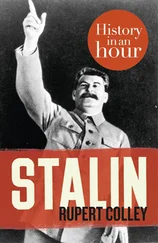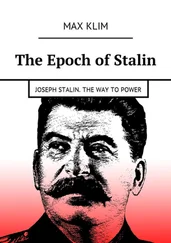* * *
One of the mysteries of the Terror was Stalin’s obsession with forcing his victims to sign elaborate confessions of unlikely crimes before they died. It was only with the slaughter of the NKVD and military brass between March and July 1937 that Stalin emerged as the absolute dictator. Even then, he still had to convince his magnates to do his bidding. How did he do it?
There was the character of Stalin himself: the cult of personality was so pervasive in the country that “Stalin’s word was law,” said Khrushchev. “He could do no wrong. Stalin could see it all clearly.” Mikoyan thought that the cult was the reason no one could challenge Stalin. 14But the Terror was not merely Stalin’s will: he may have inspired much of it, and it may have reflected his own hatreds and complexes, but his magnates were constantly urging him to purge more Enemies. Nonetheless when they knew the victim, they required proof. That was the reason Stalin paid such attention to the written words of confession, signed by the victims.
As soon as he received testimonies from Yezhov, Stalin distributed them to the Politburo who found this deluge of self-incrimination and denunciation hard to refute: in March 1937, Stalin typically sent a cover note to Molotov, Voroshilov, Kaganovich and Mikoyan: “I ask you to recognize the testimony of Polish-German spies Alexandra (mother) and Tamara (daughter) Litzinskaya and Minervina, former secretary of A. Yenukidze.”
All the magnates knew Yenukidze well so Stalin made sure they saw all the evidence. 15When Mikoyan doubted the confessions, Stalin accused him of weakness but then called him back and showed him the signed testimonies: “He writes it himself… signs every page.” These preposterous confessions were enough to convince Kaganovich: “How could you not sign it [the death sentence] if according to the investigation… this man was an Enemy?” Zhdanov, according to his son, “did trust the denunciations from Yezhov… For some time, my father did believe there were Tsarist agents among the Leningrad leadership.” But when his parents knew the victims personally as friends, then his mother would say, “If he’s an Enemy of the People, I am one too!” Again and again, in whispered conversations, the leaders and their wives used these same words to express their doubts about one or two of the arrests although they believed in the guilt of most of the victims.
The magnates were being disingenuous in their shock. When they knew the person, they naturally took a special interest in the proof, but all of them understood and accepted that the details of the accusations and confessions did not matter. So why were they all killed? Nadezhda Mandelstam wrote that they were killed “for nothing” while Maya Kavtaradze, whose parents were arrested, simply says: “Don’t ask why!” They were killed not because of what they had done but because of what they might do. As Molotov explained, “The main thing was, that at the decisive moment, they could not be depended on.” Indeed, some, such as Rudzutak, were not even “consciously” disloyal. It was the potential nature of this betrayal which meant that Stalin could still admire the work or even personality of his victims: after Tukhachevsky and Uborevich’s shootings, he could still lecture the Politburo about the talent of the former and encourage soldiers to “Train your troops as Uborevich did.” 16But there was also a peculiarly religious aspect.
When Stalin briefed Vyshinsky on the January 1937 trial, he addressed the accused thus: “You lost faith”—and they must die for losing it. He told Beria: “An Enemy of the People is not only one who does sabotage but one who doubts the rightness of the Party line. And there are a lot of them and we must liquidate them.” Stalin himself implied this when he told a desperate comrade, who asked if he was still trusted, “I trust you politically, but I’m not so positive in the sphere of the future perspectives of Party activities,” which seems to mean that he trusted him now but not necessarily in the coming war.
“There is something great and bold about the political idea of a general purge,” Bukharin, who understood Stalin so well, wrote to him from prison, because it would “arouse an everlasting distrust… In this way, the leadership is bringing about a full guarantee for itself.” The stronger the Enemies of the State, the stronger the State (and Stalin) had to be. This circle of “everlasting distrust” was his natural habitat. Did he believe every case? Not forensically, but this flint-hearted politician believed only in the sanctity of his own political necessity, sometimes fused with personal vengeance.
At the lunch after the seventh November parade, held as usual at Voroshilov’s flat and attended by the magnates, including Yezhov, Khrushchev, and Redens, Mikoyan played the toastmaster, proposing “witty toasts for everyone in turn.” Then “once more [a toast] to the great Stalin,” who then stood up to explain the Terror: anyone who dared to weaken the power of the Soviet State “in their thoughts, yes even their thoughts” would be considered an Enemy and “we will destroy them as a clan.” Then he actually toasted the massacre: “To the complete destruction of all Enemies, them and their kin!” at which the magnates gave “approving exclamations: To the great Stalin!” These might have been the words of a medieval Caucasian chieftain, “a brilliant politician of the Italian Renaissance”—or Ivan. He explained that he, no great orator and an unimpressive fellow, had succeeded the “eagle” Lenin because that was what the Party wanted. He and his men were driven by “holy fear” of not justifying the trust of the masses. Thus, Stalin went on to explain, this was truly a holy terror that stemmed from Bolshevism’s Messianic nature. No wonder Yezhov called the NKVD his “secret sect.” 17
The squalidity of this sacred thuggery beggars belief: the distance from the torture chambers of the Lubianka to Stalin’s Little Corner is about a mile, but it was much closer then.
22. BLOODY SHIRTSLEEVES
The Intimate Circle of Murder
In the mornings, Blackberry visited the Politburo and attended meetings, coming straight from the torture chambers. Khrushchev one day noticed spots of clotted blood on the hem and cuffs of Yezhov’s peasant blouse. Khrushchev, who himself was no angel, asked Yezhov what the spots were. Yezhov replied, with a flash of his blue eyes, that one should take pride in such specks because they were the blood of the Enemies of the Revolution.
Stalin often wrote instructions beside the names. In December 1937, he added the order “Beat, beat!” next to a name. “Isn’t it time to squeeze this gentleman and force him to report on his dirty little business,” Stalin wrote beside another. “Where is he—in a prison or a hotel?” The Politburo specified officially in 1937 that torture should be used. As Stalin later asserted, “The NKVD practice of the use of physical pressure… permitted by the Central Committee” was a “totally correct and expedient method.”
Yezhov supervised his torturers who had their own jargon for their work: they called the process of destroying an innocent human “French wrestling”—“ frantsuskaya borba .” When some of them were interrogated themselves years later, they revealed how they used the zhguti , the special club, and the dubinka , the truncheon, as well as the more traditional prevention of sleep and constant interrogation that they called the “conveyor belt.” The Cheka had long had a cult of torture: indeed Leonid Zakovsky, one of Yagoda’s men, had written a guide to torture.
Frequently, the Politburo, such as Molotov and Mikoyan, would go over to interrogate their comrades in Yezhov’s grand office at the Lubianka: “Rudzutak had been badly beaten and tortured,” said Molotov about one such session. “It was necessary to act mercilessly.” Kaganovich thought “it was very difficult not to be cruel” but “one must take into consideration that they were experienced Old Bolsheviks; how could they give testimonies voluntarily?” This may make it sound as if “the Politburo was filled with gangsters,” in Molotov’s words. They may not have been Mafia hit men—few except Yezhov and later Beria personally tortured or killed their victims, and no Mafia hit man would be foolish enough to spend so much time on tedious cod-ideology—but it is sometimes hard to tell the difference.
Читать дальше
